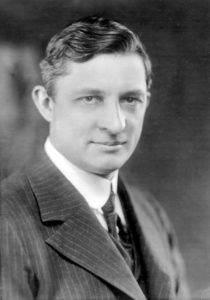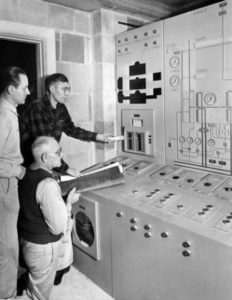Willis Carrier: Air Conditioning Hero and Cool Cat
An Inventor and Engineer Who Saved Lives and Changed America

Without HVAC, our community would cease to thrive. Yet few of us give much thought to the guy who made all this indoor comfort possible: Willis Carrier. Born in upstate New York, he won an engineering scholarship to Cornell University in 1897. His first job after college was working for the Buffalo Forge Company, assigned to work on a system designed to dry out products like coffee and wood. An inquiry from a client interested in humidity control led to Carrier designing what we recognize today as the precursor to modern HVAC. His initial drawings focused on four different tasks:
- temperature regulation
- humidity regulation
- ventilating and circulating indoor air
- air cleaning
Sounds familiar, doesn’t it? By 1906 he was granted multiple patents for his invention, and by 1911 he had presented what the HVAC industry regards today as the “Magna Carta of Psychrometrics.”
The onset of our involvement in World War I meant that Carrier’s job at Buffalo Forge was over. In response, Carrier and six of his fellow engineers pooled their money together ($32,680 in 1915, or $826,758 in 2019 dollars). He began to sell his air conditioner to businesses large enough to afford the price and the space demanded by his equipment. Hotels, department stores, and wealthy homeowners became his clients. Movie theaters advertised themselves as a cool, refreshing way to spend a hot afternoon, the air conditioning billed as the prime draw with the movie screened almost an afterthought.

(photo by Abbie Rowe, National Park Service, Harry S. Truman Presidential Library and Museum)
Even the White House installed a Carrier HVAC system in 1930, adding units in the president’s private living quarters by 1933 (Franklin Delano Roosevelt resisted the trend, preferring to work in the Oval Office in his shirt sleeves, windows wide open to the breeze.).
But the story of Willis Carrier’s air conditioning isn’t just about indoor comfort. It’s not hyperbole to say it changed the world. Workplace productivity leaped, as workers now enjoyed indoor temperatures that allowed them to focus on their jobs, rather than the sweltering heat. Accident rates fell dramatically, as their rates are 30% higher at 77 degrees and above than they are at 67 degrees Fahrenheit. In the southern states alone, according to University of Rochester economist Walter Oi, “value-added per employee in manufacturing in the South increased from 88.9 percent of the national average in 1954 to 96.3 percent of the national average in 1987.”
Furthermore, air conditioning lets us live longer. Summer and winter mortality rates were always higher than spring and fall, with this disparity most apparent in the areas of the country with the biggest weather extremes. That disparity has shrunk significantly. According to researchers at Tulane, Carnegie Mellon, MIT and the National Bureau of Economic Research, premature deaths from hot days have gone down by more than 80% since 1960 and the nationwide embrace of Willis Carrier’s HVAC designs.
So next time you set your thermostat, give a nod to dear Mr. Carrier, may his soul rest in peace. Without his ideas, life would be a lot different today. And sweatier.
Does your air conditioning need a tune up? Call Air-Tro, the company the San Gabriel Valley trusts for all its HVAC needs. (626) 357-3535.
